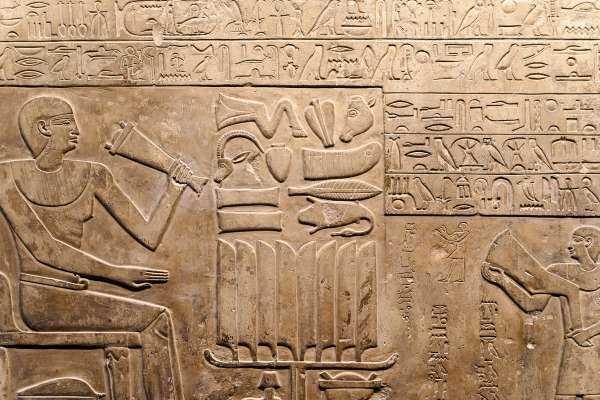In the days before the ubiquitous beep of alarm clocks, how did people ensure they woke up on time? The question, “What did people do before alarm clocks?” unveils a fascinating journey through history, exploring the ingenious methods our ancestors employed to rise with or even before the sun. From reliance on nature’s cues to the employment of human wake-up assistants, each method reflects the ingenuity and cultural nuances of its time. This article delves into these historical wake-up strategies, offering a glimpse into how the simple act of waking up has evolved alongside civilization and how it has shaped our relationship with time and technology.
Prehistoric Times
Long before the invention of alarm clocks, our prehistoric ancestors relied on the natural world to dictate their waking times. The first light of dawn, the crowing of roosters, and other environmental cues served as their morning alerts. Living in close-knit communities also played a crucial role in these early human sleep patterns. Communal living meant that daily activities, like hunting at dawn, were synchronized, promoting a collective rhythm of sleep and wakefulness. This natural synchronization helped regulate sleep cycles according to the sun’s schedule, showcasing the deep connection between human behavior and the environment in prehistoric times.
Ancient Civilizations

Long before the advent of modern alarm clocks, ancient civilizations had their own ingenious methods to ensure timely awakenings. The Egyptians, Greeks, and Romans ingeniously utilized water clocks, one of the earliest timekeeping devices, to mark the passing hours. These civilizations filled vessels with water that dripped at a consistent rate, signaling predetermined times for waking. Such clocks were not only functional but also marvels of engineering that highlighted their deep understanding of natural rhythms. This approach to timekeeping demonstrates the advanced scientific knowledge and cultural importance of time management in ancient societies, paving the way for the sophisticated devices we rely on today.
Religious Practices
Religious practices have historically influenced wake-up methods across various cultures, answering the question, “What did people do before alarm clocks?” In Islamic tradition, the muezzin’s call to prayer served as a wake-up call for the faithful, aligning their morning rituals with spiritual obligations. Similarly, in Jewish communities, the practice of reciting the Shema, or morning prayers, encouraged adherents to rise early. In Christian societies, monastery bells often summoned believers to early morning services. These practices not only marked the start of the day but also reinforced the intertwining of daily life with spiritual routines, showcasing a natural integration of timekeeping within religious contexts.
The Industrial Revolution and Workday Regulation
The Industrial Revolution marked a pivotal shift in waking practices, particularly as workers transitioned from agricultural settings to factory jobs. This era’s inquiry, “What did people do before alarm clocks?” highlights how the stringent schedules of industrial work necessitated new methods of time discipline. As factories required employees to start their shifts simultaneously, punctuality became crucial. This demand led to the broader adoption of alarm clocks, which ensured workers could meet the exact timeliness that industrial jobs demanded. This period not only transformed the structure of work but also significantly influenced how individuals regulated their time, embedding the concept of punctuality into daily life.
Knocker-Ups and Human Alarms
Before the advent of mechanical alarm clocks, the profession of the “knocker-up” was essential in Britain and Ireland. These human alarms played a crucial role in ensuring workers woke up on time for their shifts. Armed with long sticks, pea shooters, or small hammers, knocker-ups would tap on windows or doors until they were certain the inhabitant was awake. This method was not only reliable but also personalized, as knocker-ups often served the same families for years, ensuring a punctual start to each day. Their unique role highlights a fascinating aspect of community interdependence and the personalized nature of waking practices before the digital age.
Technological Innovations in the 19th Century
The 19th century marked a pivotal era in timekeeping with the introduction of mechanical alarm clocks, a key innovation that revolutionized how people managed their daily routines. Before these devices, individuals relied on natural cues or other rudimentary methods to wake up. However, as industrialization accelerated, the need for precise time management became crucial. Mechanical alarm clocks offered unprecedented reliability and convenience, gradually phasing out older waking practices. This shift not only enhanced personal productivity but also significantly influenced broader social and economic structures, aligning more closely with the demands of industrial society and setting the stage for modern timekeeping practices.
Cultural Variations in Waking Practices
Across the globe, waking practices have varied significantly due to differences in climate, technology, and social structure. In regions with abundant sunlight, such as the Mediterranean, people naturally woke with the dawn. In contrast, in northern climates with less daylight, different strategies were needed, leading to innovations like the candle clock. Social structure also played a crucial role; in agrarian societies, roosters and other farm animals provided a natural wake-up call, aligning with the rhythms of agricultural life. These cultural distinctions underline how communities adapted to their environments, utilizing available resources and technological innovations to regulate their daily routines effectively.
Transition to Modern Alarm Technologies

The transition from mechanical to digital alarm clocks marks a significant evolution in our wake-up practices. Initially, mechanical alarms were a novel invention, ringing bells or buzzing to signal the start of a new day. However, as technology advanced, digital clocks took over with customizable features like multiple alarms and soothing wake-up tones. The introduction of smartphones has further revolutionized morning routines. These devices incorporate sophisticated apps that not only wake users but also analyze sleep patterns for optimal rest. This progression underscores the key question, “What did people do before alarm clocks?” and highlights how technological advancements continue to reshape our daily rituals.
Conclusion
In conclusion, exploring the question “What did people do before alarm clocks?” reveals a rich tapestry of human ingenuity and adaptability. From ancient civilizations relying on natural cues to the development of mechanical and digital alarm technologies, our wake-up practices have evolved significantly over time. Cultural variations, technological innovations, and societal shifts have all played crucial roles in shaping how we awaken each day. Yet, at its core, the quest to rise on time remains a universal human experience. Understanding our past methods of waking up not only offers insights into historical lifestyles but also prompts reflection on our present reliance on technology. Ultimately, the journey through time highlights the enduring importance of time management and the ways in which we have adapted to meet this fundamental human need.
